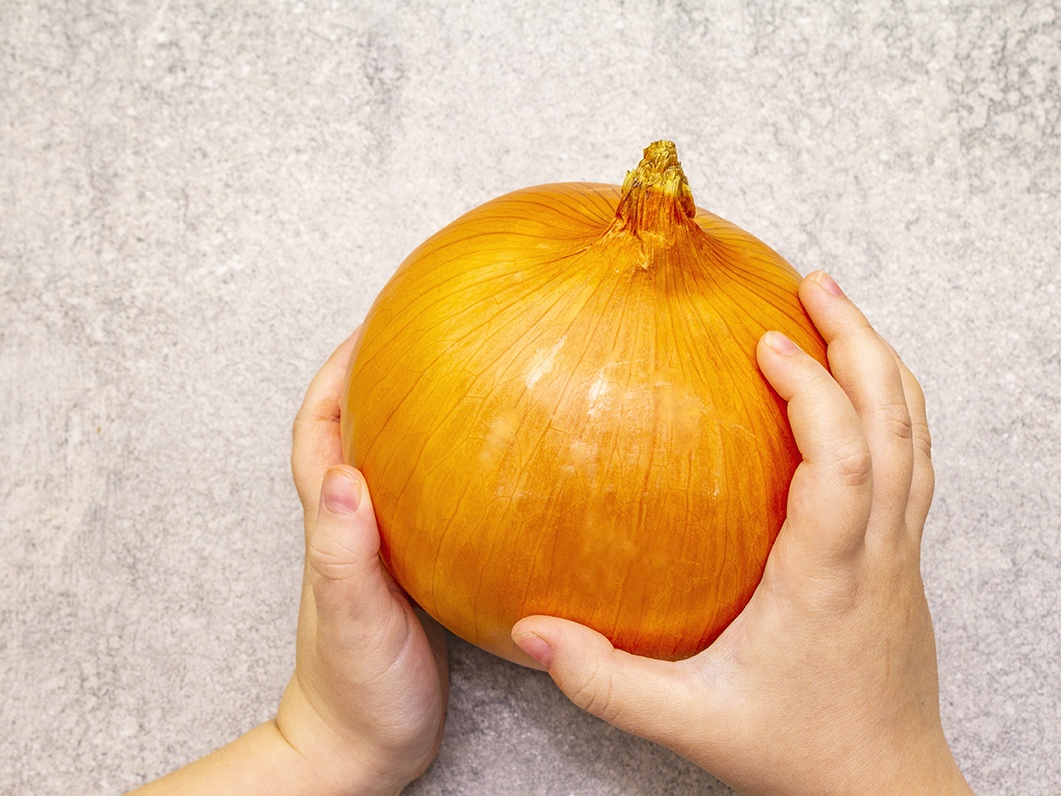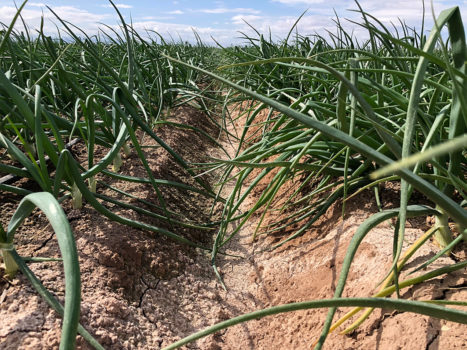Information and misinformation about the Coronavirus, COVID-19, are circulating as such a prairie-fire rate that it’s difficult to stay in the news loop, but we’re checking the best sources daily to bring you what we glean as we investigate.
Our best take on the situation is that maintaining calm, practicing sensible and vigilant hygiene and sticking to a healthy lifestyle are advisable – and that includes onions in a diet rich in fresh fruits and vegetables.
From the United States Department of Agriculture’s website page, https://www.usda.gov/coronavirus, we quote some frequently asked questions and the USDA’s answers. First is “Can I become sick with Coronavirus from food?” And the answer is, “We are not aware of any reports at this time of human illnesses that suggest COVID-19 can be transmitted by food or food packaging. However, it is always important to follow good hygiene practices (i.e., wash hands and surfaces often, separate raw meat from other foods, cook to the right temperature, and refrigerate foods promptly) when handling or preparing foods.”
Another frequently asked question pertains to access to food, and the answer is “USDA is monitoring the situation closely in collaboration with our federal and state partners. FNS is ready to assist in the government-wide effort to ensure all Americans have access to food in times of need. In the event of an emergency or disaster situation, Food and Nutrition Service programs are just one part of a much larger government-wide coordinated response. All of our programs, including SNAP, WIC, and the National School Lunch and Breakfast Programs, have flexibilities and contingencies built-in to allow us to respond to on-the-ground realities and take action as directed by Congress. For examples of flexibilities used in previous situations, please visit: www.fns.usda.gov/disaster/pandemic.”
That calm and practical approach was also evident in the recent United Fresh Produce Association town hall event in Cerritos, CA. The event, which featured United Fresh President/CEO Tom Stenzel, was part of the Fresh Produce & Floral Council meeting hosted on March 4 as part of the “All Roads Lead to San Diego!” promotional campaign for United Fresh’s 2020 Convention and Expo June 16-19 in that SoCal city.
Tom was joined by United Fresh Vice President of Food Safety & Technology Jennifer McEntire, said the virus is not considered a food safety risk. She said COVID-19 is “more like the flu” and said food industry companies should practice hygiene and GMP protocol that are already in place.
And Stenzel stressed the importance of industrywide cooperation, saying, that rather than having retail and foodservice buyers diverge, everyone should pull together. One important step is to reduce packaging waste, and Tom said awareness is key in packaging for safety and shelf life as well as other issues.
As the fruit and vegetable industry continues to feed the nations, the USDA is also working to keep food readily available in areas seeing the most COVID-19 cases. To that end, there were March 2 announcements that requests were approved for Washington State and California to allow meals served during school closures “to minimize potential exposure to the coronavirus. These meals are available at no cost to low-income children, and are not required to be served in a group setting, to ensure kids receive nutritious meals while schools are temporarily closed.”
Brandon Lipps, Deputy Under Secretary for the USDA Food, Nutrition and Consumer Services, was quoted as saying, “USDA stands with the people [of Washington State and California] as a part of a federal-wide coordinated response. The flexibility provided by the waiver approved today will help ensure that our children get wholesome meals, safeguarding their health during times of need.”
The program will continue through June 20 of this year, and “USDA stands ready to provide additional assistance to the people” of affected areas “allowed by law and in coordination with the much larger government-wide response.”
Moreover, “All Food and Nutrition Service programs – including the Supplemental Nutrition Assistance Program (SNAP); Special Nutrition Program for Women, Infants, and Children (WIC); and the National School Lunch and Breakfast Programs – have flexibilities and contingencies built-in to allow them to respond to on-the-ground realities in the event of a disaster or emergency situation. For more information about the coronavirus response across USDA, please visit: www.usda.gov/coronavirus.”
As for the health attributes of onions, the National Onion Association’s site, https://www.onions-usa.org/all-about-onions/onion-health-research-2/onions-and-coronavirus/, offers some info as well.
“Onions are particularly rich in prebiotics, which help increase the number of friendly bacteria in your gut to build immunity from viruses such as COVID-19, most recently known as the coronavirus scare. Many studies have linked onion consumption with increased immunity, but the strain COVID-19 is so new that there have been no studies specific to onions and coronavirus,” the site says.
Dr. Irwin L. Goldman, professor at the Department of Horticulture University of Wisconsin-Madison, is quoted by the NOA: “Recently, many people have asked whether onions are capable of preventing or treating viruses such as the Coronavirus (COVID-19). Viruses are pieces of nucleic acid (the same material that makes up DNA) covered by a protective coat. They are not typically considered to be ‘living’ in the way that bacteria or fungi are; but they are microscopic and therefore may be considered in the general class known as microbes.
There is some evidence that the compounds found in onion may have anti-viral properties, and there are some published scientific studies that demonstrate some protective effects of onion compounds on the influenza virus. Nothing is yet known on whether the compounds found in onion would have protective or inhibitory effects on COVID-19. It is important to consult a medical professional when considering options for prevention or treatment of serious diseases such as COVID-19.”



